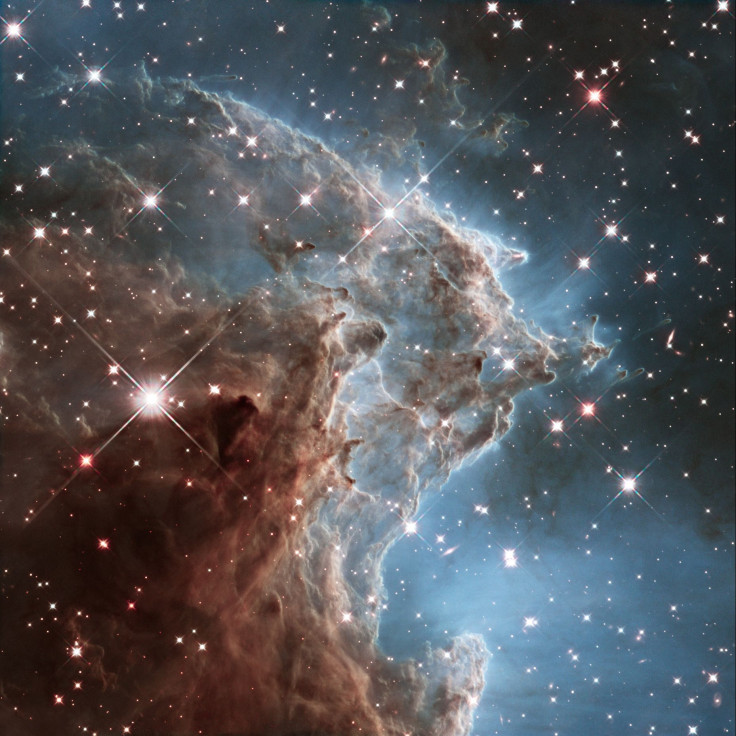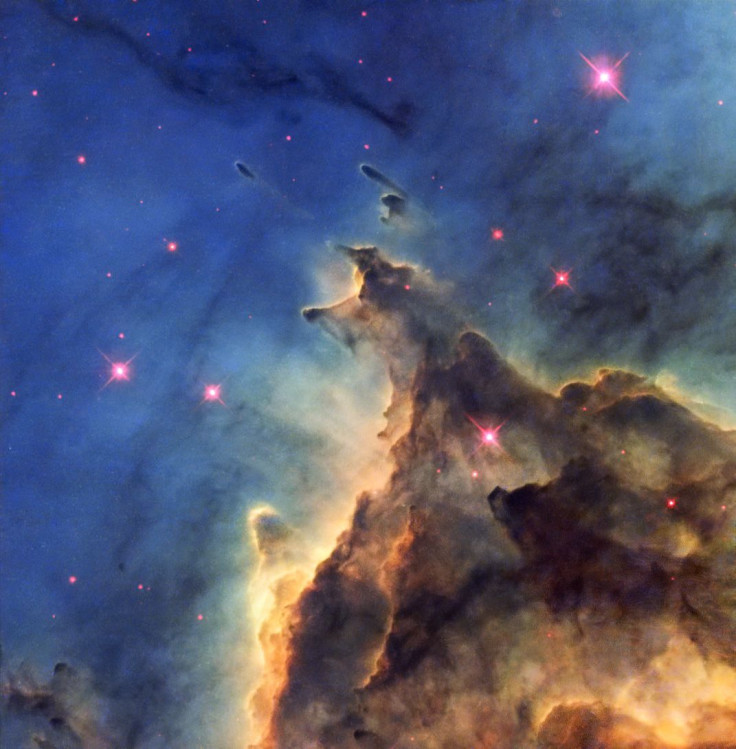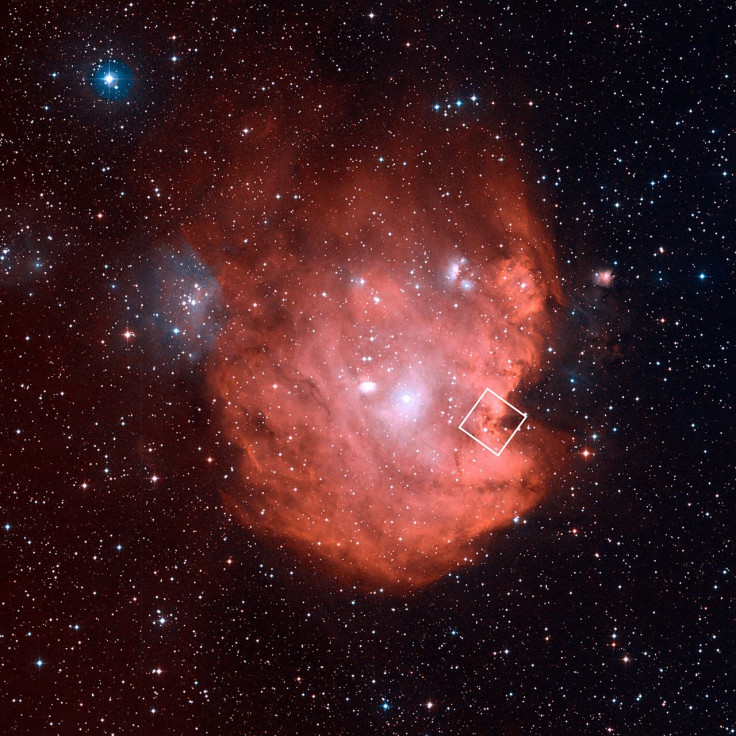Hubble Space Telescope Takes A New Picture Of The Monkey Head Nebula For Its 24th Birthday [PHOTO]
The Hubble Space Telescope was launched in 1990 and, as of 2011, has made more than one million observations. To celebrate its 24th birthday, Hubble revisited the Monkey Head Nebula and a snapped a new picture of the region that is bursting with young stars.

NGC 2174, better known as the Monkey Head Nebula, is located around 6,400 light-years from Earth in the constellation Orion. Nebulas are massive clouds of dust and gas that are perfect for the formation of new stars. The Monkey Head Nebula is no exception and the stellar nursery is teeming with young stars. As the young stars form they create wind which pushes gas outward.
Like the Prawn Nebula, NGC 2174 is classified as an H II region, as it has a high concentration of ionized atomic hydrogen. The young stars produce large amounts of ultraviolet radiation which strip electrons from the surrounding hydrogen gas, causing the cloud to glow red.

The new Hubble image of the Monkey Head Nebula was created using different filters using the Wide Field Camera 3. The camera was installed in 2009 and dramatically increased the resolution of Hubble's images. The WFC3 can capture images in ultraviolet and visible light (VUIS) as well as near infrared. According to the Hubble team, combining the different WFC3 filters can highlight unseen colors, such as the brown dust cloud in the foreground and the blue gas in the background.

It is easy to see the improvement from 2001 to the present in the two images of the Monkey Head Nebula. The 2001 image was captured using the Wide Field Planetary Camera 2 which was replaced by the WFC3. According to the Hubble team, the space telescope create more than 80 gigabytes of data per month.
© Copyright IBTimes 2024. All rights reserved.






















